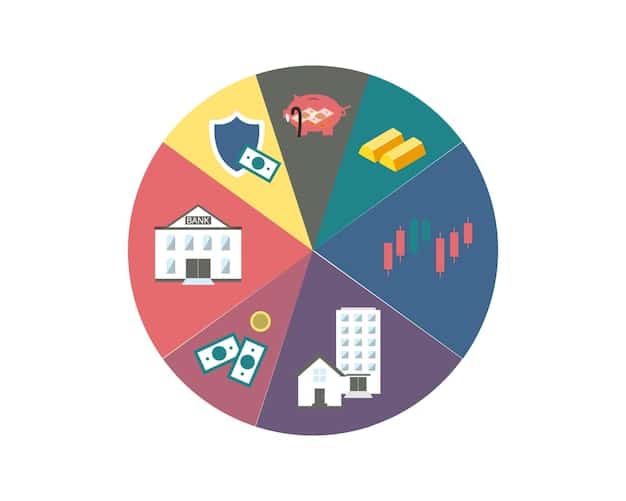Blended Retirement System (BRS) 2025: What Military Members Need to Know

The Blended Retirement System (BRS) is the military’s retirement plan, blending a traditional pension with a Thrift Savings Plan (TSP), offering service members greater flexibility and control over their retirement savings. This comprehensive guide covers everything you need to know about the BRS in 2025.
Understanding your retirement benefits is crucial for financial security, especially for military members. The Blended Retirement System (BRS), implemented in 2018, significantly changed how service members plan for their future. This article dives into what you need to know about the BRS in 2025, ensuring you are well-prepared for retirement.
Understanding the Basics of the Blended Retirement System
The Blended Retirement System (BRS) combines a traditional defined benefit plan with a defined contribution plan, offering a more flexible and portable retirement benefit for service members. This section covers the key aspects of the BRS and how it differs from the legacy retirement system.
The BRS ensures that all service members, even those who don’t serve for a full 20 years, can accumulate retirement savings through the Thrift Savings Plan (TSP) and receive government contributions. Let’s explore the core components of this retirement system.
Traditional Retirement Pension
The traditional component of the BRS is a defined benefit plan, providing a monthly pension to those who serve at least 20 years. The pension is calculated based on years of service and average high-3 salary.
Thrift Savings Plan (TSP)
The TSP is a defined contribution plan, similar to a 401(k), where service members can contribute a portion of their pay. The government matches a percentage of these contributions, enhancing retirement savings.
- Automatic Enrollment: New service members are automatically enrolled in the TSP, encouraging early savings habits.
- Matching Contributions: The government matches 100% of the first 3% and 50% of the next 2% of a service member’s contributions.
- Vesting: Service members are immediately vested in their own contributions, but government contributions are vested after two years of service.
The BRS provides a more equitable retirement system by ensuring all service members receive some retirement benefits, even if they don’t serve a full 20 years. It combines the security of a traditional pension with the flexibility of a TSP.

Eligibility and Enrollment in the BRS
Determining who is eligible for the Blended Retirement System (BRS) is crucial for service members. This section outlines the eligibility criteria and the enrollment process, including the opt-in option for those who were grandfathered under the legacy retirement system.
Understanding whether you fall under the BRS or the legacy system can significantly impact your retirement planning. Let’s clarify the specific rules and timelines for BRS eligibility.
Who is Eligible?
Service members who entered the military on or after January 1, 2018, are automatically enrolled in the BRS. Those who entered before this date had the option to opt-in.
Opt-In Decision
Service members who entered the military before January 1, 2018, had the opportunity to opt into the BRS during 2018. This was a one-time, irrevocable decision.
- Factors to Consider: When deciding whether to opt-in, service members considered their years of service, career goals, and financial situations.
- Financial Planning: Those who planned to serve less than 20 years often found the BRS more beneficial due to the TSP contributions.
- Irrevocable Choice: Once the decision was made, it could not be reversed, making careful consideration essential.
Understanding the eligibility and enrollment process for the BRS ensures that service members can make informed decisions about their retirement benefits. The opt-in option provided flexibility for those under the legacy system to choose the retirement plan that best suited their needs.
Maximizing Thrift Savings Plan (TSP) Contributions
The Thrift Savings Plan (TSP) is a crucial component of the Blended Retirement System (BRS), offering service members a way to save for retirement with matching government contributions. This section provides strategies for maximizing TSP contributions and making informed investment decisions.
To fully leverage the benefits of the TSP, it’s essential to understand contribution limits, investment options, and the power of compound interest. Let’s delve into the specifics of maximizing your TSP.
Contribution Limits
The IRS sets annual contribution limits for the TSP. Staying informed about these limits is essential to maximize your savings.
Investment Options
The TSP offers several investment funds, each with different levels of risk and potential returns. Choosing the right mix of funds is crucial for a well-diversified portfolio.
- C Fund: Tracks the S&P 500 index, offering exposure to large-cap US stocks.
- S Fund: Tracks the Dow Jones US Completion Total Stock Market Index, providing exposure to small and medium-sized US stocks.
- I Fund: Tracks the MSCI EAFE index, offering exposure to international stocks.
Maximizing TSP contributions and making informed investment decisions are critical for building a secure retirement nest egg. The TSP, with its matching contributions and diverse investment options, provides a powerful tool for service members to achieve their financial goals.

Understanding Continuation Pay in the BRS
Continuation pay is a significant incentive offered under the Blended Retirement System (BRS) to encourage service members to continue their military service. This section explains what continuation pay is, who is eligible, and how it impacts financial planning.
Continuation pay can provide a substantial financial boost, but it’s important to understand the eligibility requirements and how it aligns with your career goals. Let’s explore the details of this unique benefit.
What is Continuation Pay?
Continuation pay is a one-time bonus paid to service members who agree to serve additional years in the military. It is designed to incentivize retention and reward continued service.
- Payment Amount: The amount varies based on branch of service and can range from 2.5 to 13 times your monthly basic pay.
- Service Obligation: In exchange for continuation pay, service members agree to serve a specified number of additional years, typically three to four.
- Tax Implications: Continuation pay is subject to federal and state income taxes, which should be factored into financial planning.
Understanding continuation pay is crucial for service members considering their long-term career goals. Evaluating the benefits and obligations can help you make an informed decision about your military service and financial future.
Financial Planning Tips for the BRS in 2025
Effective financial planning is essential for service members under the Blended Retirement System (BRS) to maximize their retirement benefits and achieve their financial goals. This section provides practical tips for creating a solid financial plan tailored to the BRS.
Developing a comprehensive financial plan involves budgeting, investing, and understanding the unique aspects of military benefits. Let’s explore some strategies for optimizing your financial well-being.
Create a Budget
A budget is the foundation of any solid financial plan. It helps you track your income and expenses, identify areas where you can save money, and allocate funds for retirement and other financial goals.
Set Financial Goals
Setting clear financial goals provides direction and motivation for your financial planning efforts. These goals could include saving for retirement, buying a home, or paying off debt.
- Retirement Planning: Determine how much you need to save for retirement and develop a plan to reach your goals.
- Emergency Fund: Build an emergency fund to cover unexpected expenses and avoid going into debt.
- Debt Management: Develop a strategy for paying off high-interest debt, such as credit cards and personal loans.
Implementing these financial planning tips can help you make the most of the Blended Retirement System and achieve your financial goals. Creating a budget, setting financial goals, and seeking professional advice are all essential steps for securing your financial future.
Common Mistakes to Avoid with the BRS
Navigating the Blended Retirement System (BRS) requires careful planning and informed decision-making. This section highlights common mistakes that service members make and provides guidance on how to avoid them to maximize retirement benefits.
Avoiding these pitfalls can significantly impact your financial future and ensure that you make the most of the BRS. Let’s examine some frequent missteps and how to steer clear of them.
Not Contributing Enough to the TSP
One of the most common mistakes is not contributing enough to the Thrift Savings Plan (TSP) to take full advantage of the matching government contributions. Failing to contribute at least 5% of your pay means missing out on free money.
Ignoring Investment Options
Another mistake is not paying attention to the investment options within the TSP. Simply leaving your money in the default fund may not provide the best returns for your long-term goals.
- Risk Tolerance: Consider your risk tolerance when choosing investment funds. Younger service members may be able to take on more risk for potentially higher returns.
- Diversification: Diversify your investments across different funds to reduce risk and improve long-term performance.
- Regular Review: Regularly review and adjust your investment allocations to ensure they align with your financial goals and risk tolerance.
By avoiding these common mistakes, service members can make the most of the Blended Retirement System and build a secure financial future. Maximizing TSP contributions, understanding investment options, and seeking professional advice are all crucial for success.
| Key Point | Brief Description |
|---|---|
| 💰 TSP Contributions | Maximize contributions to get the full government match. |
| 📊 Investment Options | Choose investments based on your risk tolerance and long-term goals. |
| 💸 Continuation Pay | Consider the service commitment and tax implications. |
| 🎯 Financial Planning | Create a budget and set clear financial goals. |
Frequently Asked Questions (FAQ)
▼
The BRS is a retirement plan that combines a traditional pension with a Thrift Savings Plan (TSP), offering more flexibility for service members, regardless of how long they serve.
▼
Service members who entered the military on or after January 1, 2018, are automatically enrolled. Those who entered before that date had the option to opt-in during 2018.
▼
Continuation pay is a one-time bonus paid to service members who agree to serve additional years. The amount varies but can be a significant financial incentive.
▼
Contribute at least 5% of your base pay to receive the full government matching contributions. Regularly review and adjust your investment allocations.
▼
Avoid not contributing enough to the TSP, ignoring investment options, and failing to create a solid financial plan tailored to your specific needs and goals.
Conclusion
The Blended Retirement System (BRS) offers significant opportunities for military members to build a secure financial future. By understanding the system’s components, maximizing TSP contributions, and avoiding common mistakes, service members can leverage the BRS to achieve their retirement goals and ensure long-term financial well-being. Staying informed and seeking professional financial advice are key to making the most of this updated retirement system in 2025 and beyond.





